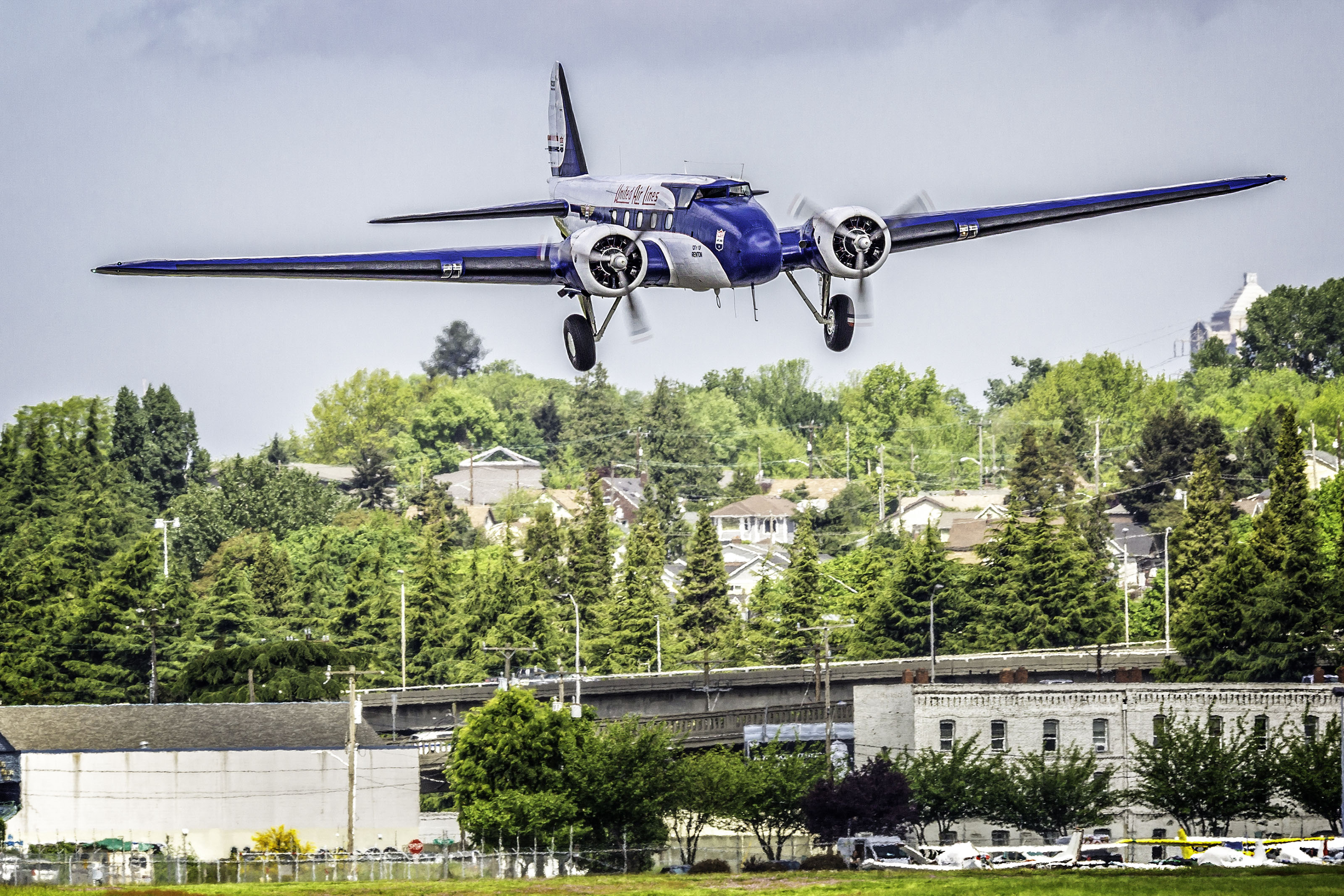
An 83-year-old Boeing 247D, forerunner of the DC-2 and DC-3, flew to Boeing Field in Seattle where it was made for display at The Museum of Flight. The museum has owned the airplane since 1966. Restoration began in 1979 followed by a post-restoration flight in 1994.
True to tradition, the two-man crew signed the left-side wheel well, indicating the aircraft had made its last flight. They are Boeing test pilots Mike Carriker and Chad Lundy. Carriker was chief test pilot on the Boeing 787 Dreamliner.
The Boeing 247 is one of four remaining in the world and the last one to fly. It was built in 1933. Restoration was done at Paine Field in Everett, Washington, a 15- to 20-minute flight from the museum. The airplane was used by United Air Lines and was the first all-metal “modern” airliner and pioneered variable pitch propellers and deicer wing and tail boots. Another Boeing 247D hangs in the Smithsonian National Air and Space Museum.
It cruised at 188 mph. It could have gone faster, but United pilots wanted more familiar engines so the Hornet engines were replaced by Wasps while still on the drawing board. It was planned as a 14-passenger airplane, but pilots felt no airport in the nation could handle an eight-ton aircraft, so the passenger seats were reduced to 10 plus two pilots and a flight attendant.
The aircraft’s role was eclipsed by the more capable DC-2, yet some of the 75 built were still flying in the 1960s as cargo and executive transport aircraft. Originally the windshield was canted inward so it wouldn’t reflect cockpit lights. Pilots soon found it reflected ground lights, particularly during takeoff and landing, so it was changed to a more conventional outward slope.



